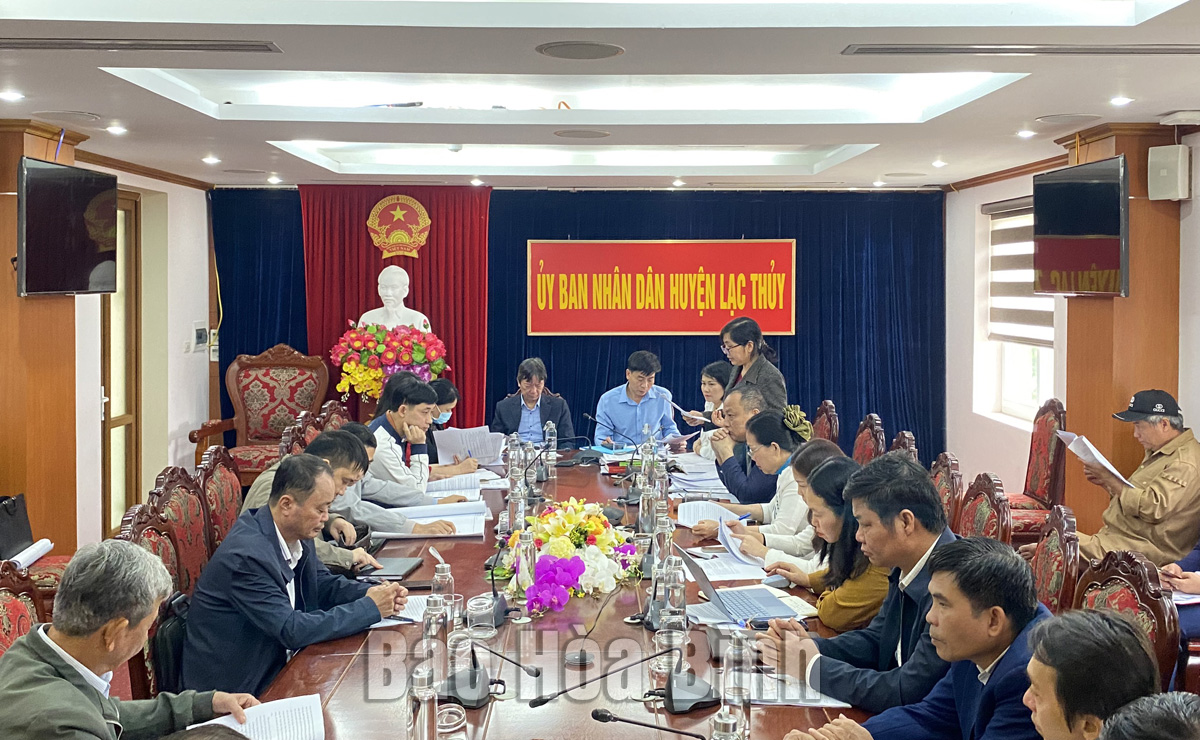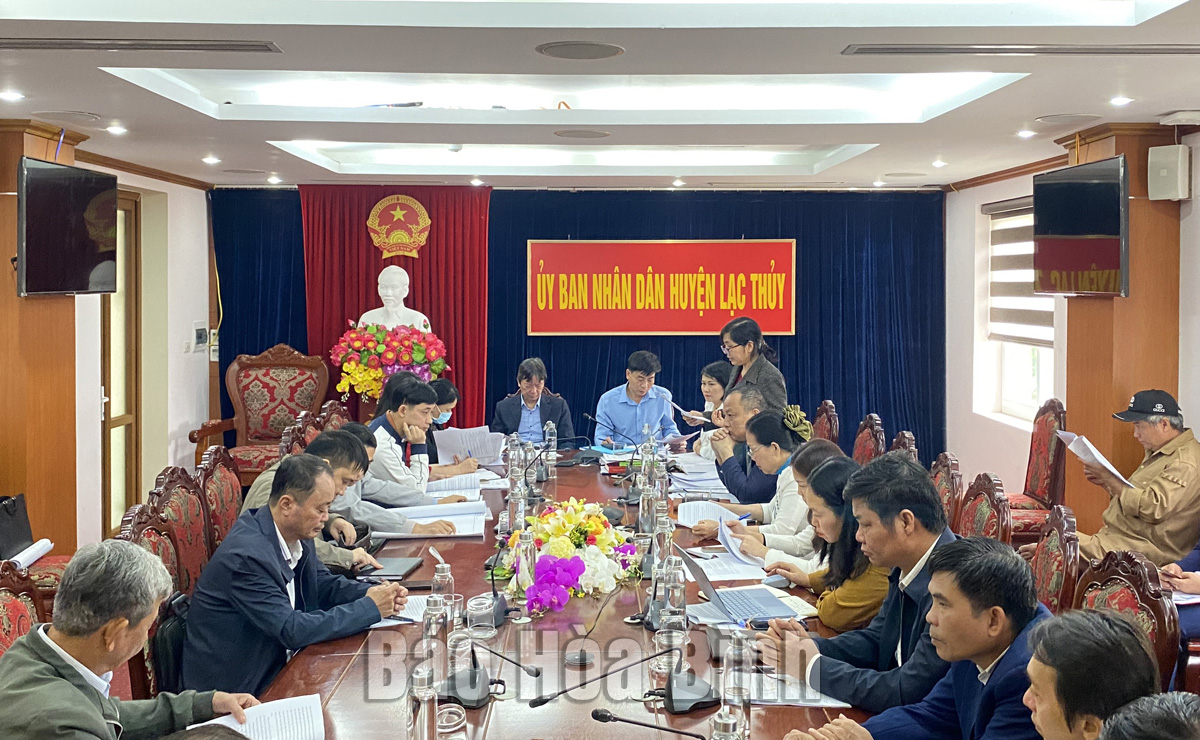
(HBO) - The People's Committee of Lac Thuy district has just held a conference to approve the scientific records of the historical relics of Lao communal house in Hung Thi commune and Co Lao temple in Thong Nhat commune.

The delegates are attending the
conference.
Co Lao Temple was built on the
land of Com village in the old Muong Teo, now it is in Minh Thanh village,
Thong Nhat commune. At the temple, there are still 5 ordinations awarded by the
feudal dynasties of Nguyen to the deity who is worshiped at the temple. Every
year, on January 6-7, the festival at the monument takes place.
Lao communal house is located in
Khoang village, Hung Thi commune. The old Lao communal house was built a long
time ago, worshiping Dai Can nation of Nam Hai Tu Vi Thanh Nuong, the deity who
had merits to help the country and protect the people in difficult times. This
is a place to conserve and preserve the traditions and the cultural identity of
the homeland. In addition to the elements of religion and belief, the ancient
temples and communal houses also have historical significance to honor and show
gratitude to the merits of ancestors and celebrities who have contributed to
building and defending the country.
With profound cultural and
historical significance and value, the scientific record of researching,
investigating, surveying and ranking relic at the provincial level, Lao
communal house and Co Lao temple relics have been approved by the Department of
Culture- Sports – Tourism, the Provincial Museum has collaborated with the
People's Committee of Lac Thuy district to basically complete.
At the conference, the draft
curriculum vitae and draft map of the protected area of Co Lao temple and Lao
communal house have been asked for the comments from the Department of Culture,
Sports and Tourism; the Department of Natural Resourses and Environment; the
relevant departments and divisions of the district; the People's Committee of
Thong Nhat Commune, the People's Committee of Hung Thi Commune; the elderly
people in the village, those who are knowledgeable about the relic, so that the
specialized agency can complete the scientific dossier and submit it to the
Chairman of the Provincial People's Committee to issue a decision to recognize
the provincial-level historical and cultural relic for Co Lao Temple and Lao
communal house.
With an increasingly vibrant and widespread emulation movement aimed at building cultured residential areas and cultured families, Yen Thuy District has been making steady progress toward improving both the material and spiritual well-being of its people, while fostering a civilized, prosperous, beautiful, and progressive community.
Once lacking recreational spaces and community facilities, Residential Group 2 in Quynh Lam Ward (Hoa Binh City) has recently received attention for the construction of a new, spacious, and fully equipped cultural house. The project followed the model of state support combined with public contributions in both labor and funding.
The "All people unite to build cultural life" movement, which has been effectively integrated with Kim Boi district’s socio-economic development goals, is fostering a lively spirit of emulation across local residential areas, hamlets, villages, public agencies, and enterprises. In addition, through the initiative, traditional cultural values are being preserved and promoted, while community solidarity and mutual support in poverty reduction and economic development are being strengthened.
A working delegation of the Hoa Binh provincial People’s Committee led by its Permanent Vice Chairman Nguyen Van Toan on June 11 inspected the progress of a project to build the Mo Muong Cultural Heritage Conservation Space linked to tourism services in Hop Phong commune, Cao Phong district.
Born and growing in the heroic land of Muong Dong, Dinh Thi Kieu Dung, a resident in Bo town of Kim Boi district, in her childhood was nurtured by the sweet lullabies of her grandmother and mother. These melodies deeply imprinted on her soul, becoming an inseparable part of her love for her ethnic group's culture. For over 20 years, this love for her hometown has driven Dung to research, collect, and pass down the cultural values of the Muong people to future generations.
In the final days of May, the Ethnic Art Troupe of Hoa Binh Province organized performances to serve the people in remote, mountainous, and particularly disadvantaged areas within the province. These were not just ordinary artistic shows, but they were the meaningful journeys aimed at spreading cultural values, enhancing the spiritual life of the people and contributing to the preservation of ethnic minority cultural identities.



